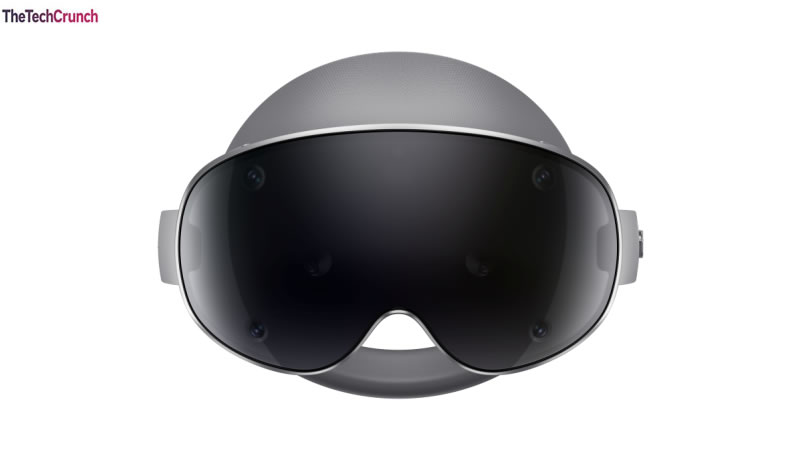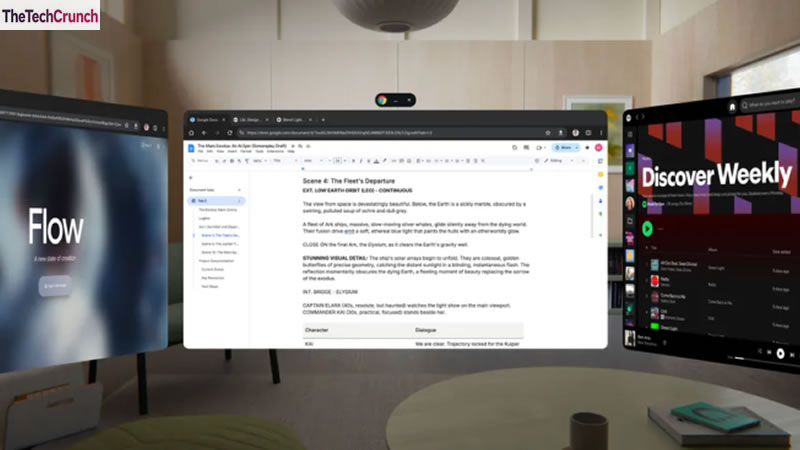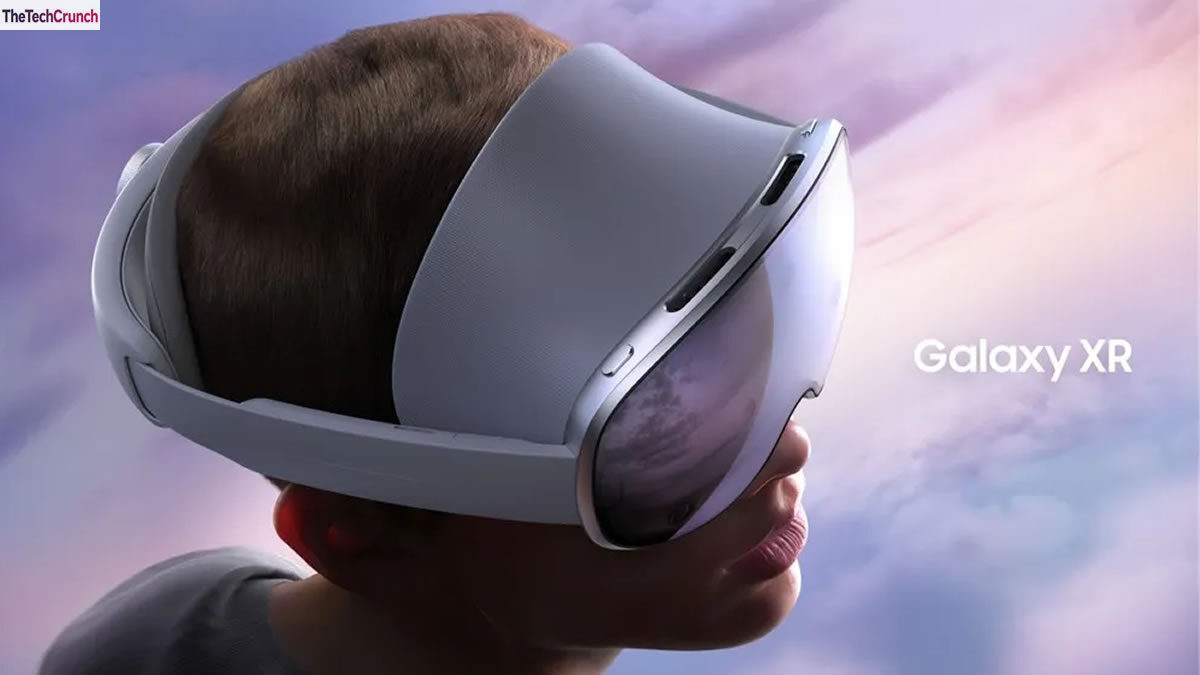Samsung has officially entered the extended reality market with the launch of its new Galaxy XR headset. The device represents Samsung’s most ambitious step into immersive technology, designed to rival Apple’s Vision Pro. The company aims to combine virtual reality, augmented reality, and mixed reality into one powerful experience.
Stay up to date with the latest technology in TheTechCrunch. This covers artificial intelligence, mobile and web apps, modern things, cybersecurity, and general technical news. From AI’s successes to chat and generative tools. Such as smartphones, laptops, and wearables’ special reviews. TheTechCrunch gives an insight into this case.
This launch signals Samsung’s renewed focus on innovation beyond smartphones. The Galaxy XR is expected to bridge the digital and physical worlds, offering a more natural way to interact with content. It reflects the growing belief that extended reality could become the next major computing platform after mobile phones.
Competing With Apple’s Vision Pro
Apple’s Vision Pro set a new standard for immersive headsets earlier this year. With its sleek design, high-resolution displays, and powerful visionOS system, it quickly attracted global attention. Samsung’s new Galaxy XR is a direct response to that success.
Rather than simply copying Apple, Samsung aims to deliver a more accessible and flexible device. Early reports suggest the Galaxy XR may offer a more affordable price and better compatibility with Android devices. This could make it appealing to a broader audience. Samsung is positioning its headset as a practical tool for entertainment, work, and communication — not just a luxury gadget.
The competition between Samsung and Apple is expected to shape the future of the XR market. Both companies are investing heavily in spatial computing and immersive media.
What Galaxy XR Promises
The Galaxy XR headset is built to deliver a premium visual and audio experience. Samsung is reportedly using its advanced OLED display technology for ultra-clear visuals and deep contrast. The headset supports high refresh rates and low latency, ensuring smooth and lifelike movement.
Audio quality is another major focus. Samsung’s spatial audio system promises to create realistic soundscapes that respond to head movements. Users can hear sounds as if they are coming from specific directions, enhancing immersion.

The headset also includes a powerful processor, developed in partnership with Qualcomm. It supports advanced AI-based rendering to optimize performance and battery life. Samsung says the Galaxy XR will be capable of handling demanding tasks like 3D design, gaming, and real-time collaboration.
Collaboration With Google And Qualcomm
One of the biggest strengths of the Galaxy XR project is Samsung’s partnership with Google and Qualcomm. Google is developing an Android-based operating system optimized for extended reality, while Qualcomm provides the custom chipset.
This three-way collaboration aims to create an open ecosystem for XR experiences. It will allow developers to create apps that work across different brands and devices. Unlike Apple’s closed ecosystem, Samsung and Google want to make XR technology more accessible.
This partnership mirrors how Android transformed the smartphone market by enabling variety and innovation. The companies believe that the same approach can help XR reach mainstream adoption.
A Focus On Comfort And Design
Samsung understands that comfort is crucial for long-term headset use. The Galaxy XR features a lightweight frame and breathable materials to reduce fatigue. Adjustable straps and soft padding make it suitable for extended sessions.
The company has also worked to improve visual comfort. The lenses automatically adjust for focus, helping reduce eye strain. The field of view is wide enough to feel immersive but not overwhelming. These design choices aim to make the headset feel natural and comfortable for everyday use.
Samsung has emphasized that the Galaxy XR is not just for tech enthusiasts. It is built for regular users who want to explore virtual spaces, watch immersive videos, or attend virtual meetings.
New Experiences With Extended Reality
The Galaxy XR opens the door to a range of new experiences. Users will be able to browse the web, stream content, and interact with 3D objects in their environment. It also supports multitasking, allowing multiple virtual windows to appear in the air around the user.
Gaming is a major focus area. Samsung is working with leading studios to create XR-optimized games that take advantage of spatial computing. Productivity is another target. Professionals can use virtual workspaces to design, collaborate, and present ideas in new ways.
The headset is also expected to integrate with Samsung’s ecosystem. Users can connect Galaxy phones, tablets, and watches for seamless control. For example, a Galaxy smartphone could act as a virtual keyboard or controller within XR environments.
Competing On Price And Accessibility
While Apple’s Vision Pro is praised for its performance, its high price makes it less accessible to the general public. Samsung appears ready to take a different path. The Galaxy XR is rumored to come with a lower price tag while still offering high-end performance.

This approach could help Samsung capture a large portion of the market, especially in regions where affordability matters. By focusing on both innovation and accessibility, Samsung aims to bring extended reality to millions of users rather than a niche group of enthusiasts.
Privacy And Safety Features
Samsung has also focused on user privacy and safety. The Galaxy XR includes built-in features to manage data securely. Facial recognition and motion data are processed locally on the device instead of being sent to external servers.
There are also safety measures for physical movement. The headset warns users if they are about to bump into real-world obstacles. Parental controls are available for younger users, giving families confidence in safe usage. These privacy protections are part of Samsung’s broader strategy to build trust in emerging technologies.
The Future Of Spatial Computing
The introduction of the Galaxy XR marks the next chapter in the evolution of computing. Many experts believe that spatial computing — where digital and physical realities merge — will transform how people work, learn, and socialize.
Explore a complete hub for the latest apps. Smart things and security updates online. Ranging from AI-operated solutions and automation tools. TheTechCrunch offers in-depth articles, comparisons. And specialist analysis is designed to understand the rapidly changing technology. Whether you are keen on robotics, data protection, or the latest digital trends.
Samsung’s entry into this space could accelerate that change. With its vast experience in display technology and consumer electronics, the company has the resources to make XR mainstream. Its partnership with Google and Qualcomm ensures strong software and hardware support. If successful, the Galaxy XR could help shape a future where headsets become as common as smartphones.
TheTechCrunch: Final Thoughts
Samsung’s Galaxy XR headset is more than just a response to Apple’s Vision Pro. It represents the company’s vision for the future of human-computer interaction. By blending innovation, comfort, and accessibility, Samsung hopes to make extended reality part of everyday life.
Competition between Samsung and Apple will likely push both companies to keep improving. For consumers, that means better experiences, more choices, and faster progress.
As XR technology continues to evolve, Samsung’s Galaxy XR could become the device that brings immersive computing to the masses. It stands as proof that the race for the future of technology has only just begun.
Here Are More Helpful Articles You Can Explore On TheTechCrunch:
- YouTube Adds A Timer For You To Stop Scrolling Shorts
- Several Users Reportedly Complain to FTC That ChatGPT Is Causing Psychological Harm
- X Tests Pay-Per-Use Pricing Model for Its API
- Claude Code Web App: Anthropic’s Next Step in AI Coding
- WhatsApp Changes Its Terms to Bar General Purpose Chatbots from Its Platform
- Too Burned Out to Travel? This New App Fakes Your Summer Vacation Photos for You
- Wikipedia Says Traffic Is Falling Due to AI Search Summaries and Social Video
- Silicon Valley Spooks The AI Safety Advocates


